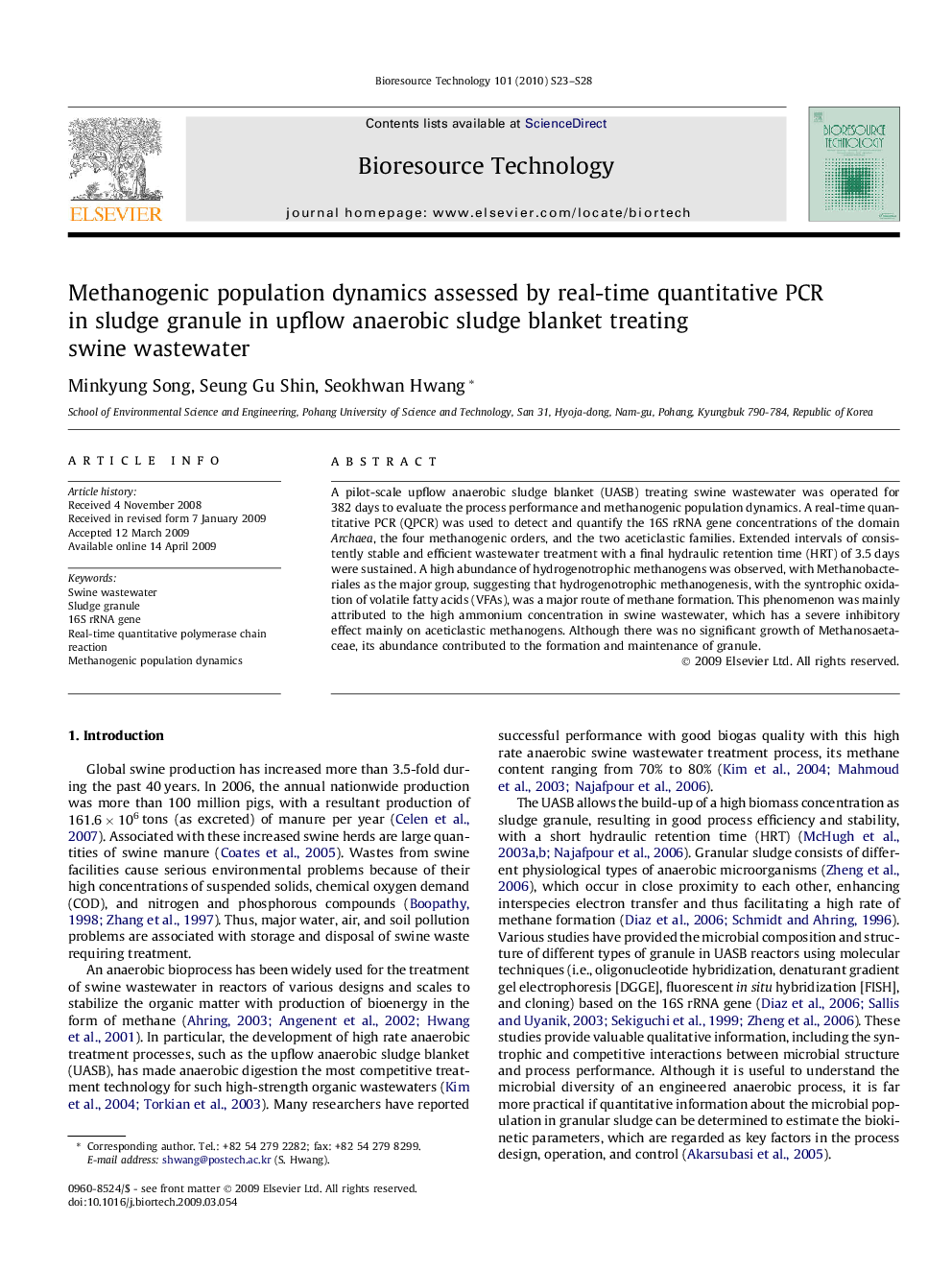| Article ID | Journal | Published Year | Pages | File Type |
|---|---|---|---|---|
| 683908 | Bioresource Technology | 2010 | 6 Pages |
A pilot-scale upflow anaerobic sludge blanket (UASB) treating swine wastewater was operated for 382 days to evaluate the process performance and methanogenic population dynamics. A real-time quantitative PCR (QPCR) was used to detect and quantify the 16S rRNA gene concentrations of the domain Archaea, the four methanogenic orders, and the two aceticlastic families. Extended intervals of consistently stable and efficient wastewater treatment with a final hydraulic retention time (HRT) of 3.5 days were sustained. A high abundance of hydrogenotrophic methanogens was observed, with Methanobacteriales as the major group, suggesting that hydrogenotrophic methanogenesis, with the syntrophic oxidation of volatile fatty acids (VFAs), was a major route of methane formation. This phenomenon was mainly attributed to the high ammonium concentration in swine wastewater, which has a severe inhibitory effect mainly on aceticlastic methanogens. Although there was no significant growth of Methanosaetaceae, its abundance contributed to the formation and maintenance of granule.
